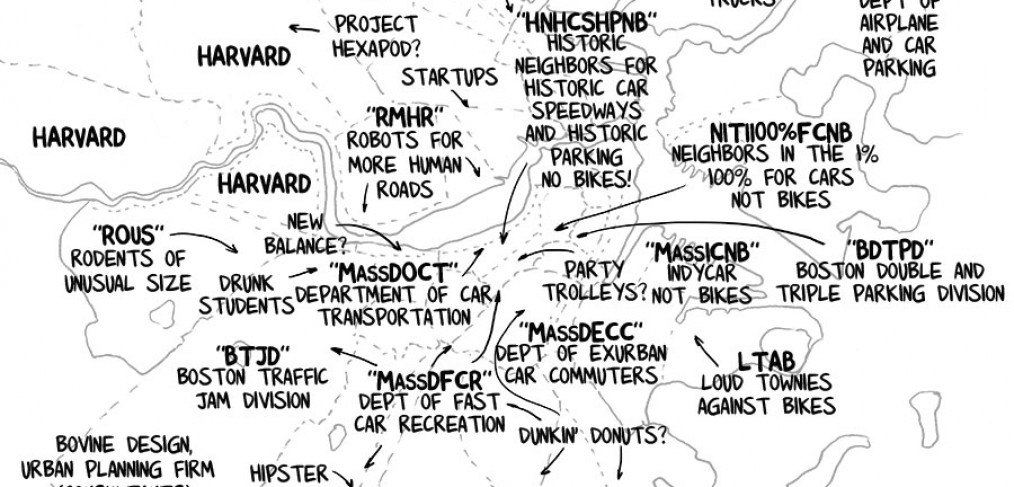
Different Roads
Sometimes when I hear about great bike infrastructure in other cities I’m tempted to move hundreds or thousands of miles away. Truthfully, in Boston, sometimes it doesn’t mean moving hundreds of miles. Sometimes it’s matter of going 2 blocks.
That’s because metro Boston is really a bunch of towns/cities very close together. Each one has different levels of bike-ability. Because of this, when biking in the metro Boston area you can experience many different approaches to bike infrastructure… sometimes one after another on the same road.
Making this even more confusing, even within a city the bike-ability varies. There are different neighborhoods with different personalities, some neighborhoods that get a lot of attention, and some neighborhoods that seem totally forgotten. And not all roads within a city are owned by a city. There are different agencies which also have different approaches to infrastructure on their roads. As a bicycling citizen it’s really hard to figure why there is so much variation. Who who owns what? Who do I email if I have a safety or bike concern? Who is responsible for making improvements? It’s really hard to figure out, there’s a lot of guess work.
And I wonder if it’s this complicated in every city.

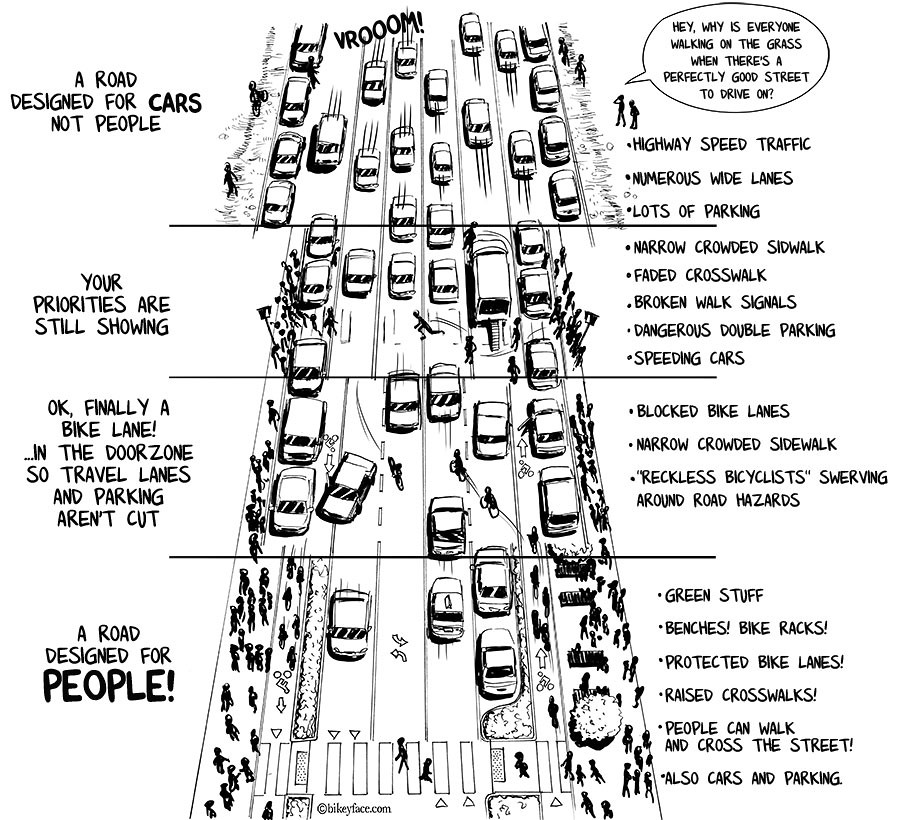
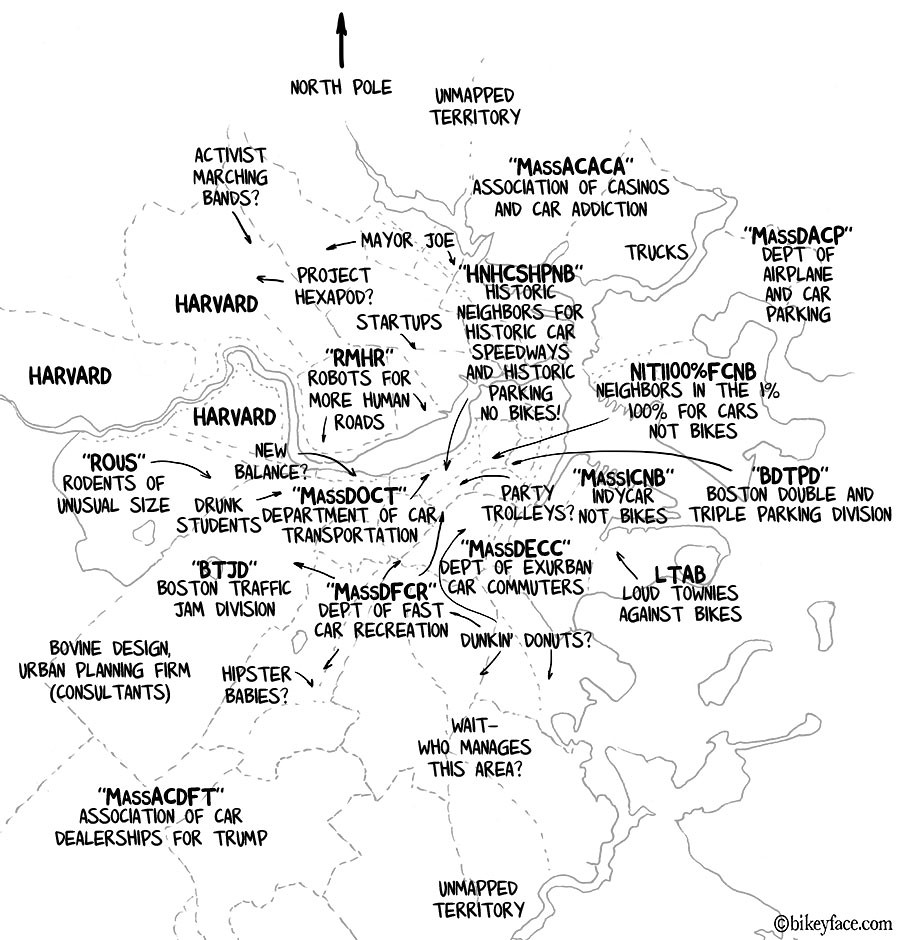

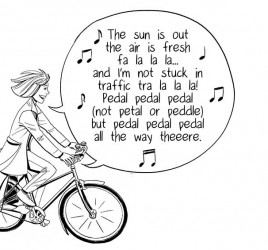
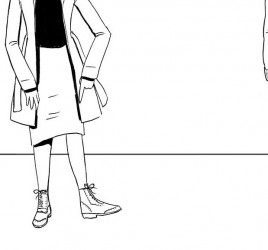
In London (UK), ‘strategic’ main roads belong to the central transport authority, and the rest are controlled by each local borough. Some boroughs want to encourage cycling, and some won’t do anything which might inconvenience drivers. Apparently once you’ve been cycling there awhile, you can sense when you cross a borough boundary.
Definitely like this in Melbourne. Even the inner cities who have strategic bike plans don’t always talk and so cycling routes vanish at a city boundary only to be one street over. Important roads are managed by the state government, even if they were important in 1890 and now should be considered suburban, and so don’t always follow a common strategy. We have a bike black spot app that uses your GPS to work out who to email.
It used to be bad in Chicago. They would put in bike lanes that didn’t connect to anything. But as they’ve built out the network, there’s more regional cooperation, more connecting the bike lanes/paths that exist in Chicago and the suburbs. They’re even extending the Chicago bike share system to nearby suburbs (which is quite an achievement, since they’re rather distant from downtown Chicago).
Door zone bike lanes suck, as we all know. It really pisses off drivers to see bicyclists riding on the outer edge or into the lane ( to avoid dooring) when they already have all that real estate in the bike lane. So drivers get more pissed off at bicyclists trying to ride safely in these things then if there were no bike lanes.
As to the separated bike paths you seem to think of as the highest level of bicycle infrastructure, those are essentially sidewalks with all the problems of sidewalks – you may have heard bicyclists who ride on sidewalks have 4x the car crashes as bicyclists who ride in the street. Why? Intersections – bicyclists speeds are typically much faster than walking speeds, and the low visibility of them on the sidepaths make them seem to pop out into the intersections, so drivers can’t avoid them.
In the Netherlands they compensate for this problem with stop signs for either the drivers or bikes, depending on the intersection, and bike-only signal phases for more heavily traveled areas. This slows both bicyclists and drivers down a lot, all these stops, but that is probably why they are so much safer in the Netherlands – in the city everybody is going slow. The Dutch call bicycling there “accelerated walking”.
The American sort of sidepath is fine where there are very few intersections, say along a river, but are totally dangerous in most suburban and urban areas with an intersection every few blocks.
Infrastructure designers in the US don’t know what they are doing and only half the job, pretty much as you drew it, so we end up with the most dangerous possible situation. We end up with door zone bike lanes or really dangerous side paths. You are better off with no infrastructure, at least from a safety point of view.
You may note that our friend Bikeyface sensibly avoided drawing intersections so as to avoid that can of worms. FWiW, my experience is that a well-designed protected bike lane has a lot of signage and road markings to alert people in cars to bicycle crossings. Without such treatments, the protected bike lane would indeed be just as dangerous as an old-fashioned sidepath.
I feel like every person responsible for designing bike lanes needs to personally experience a dooring, or at least a near miss of same. Only then will they understand what a terrible idea door-zone bike lanes really are.